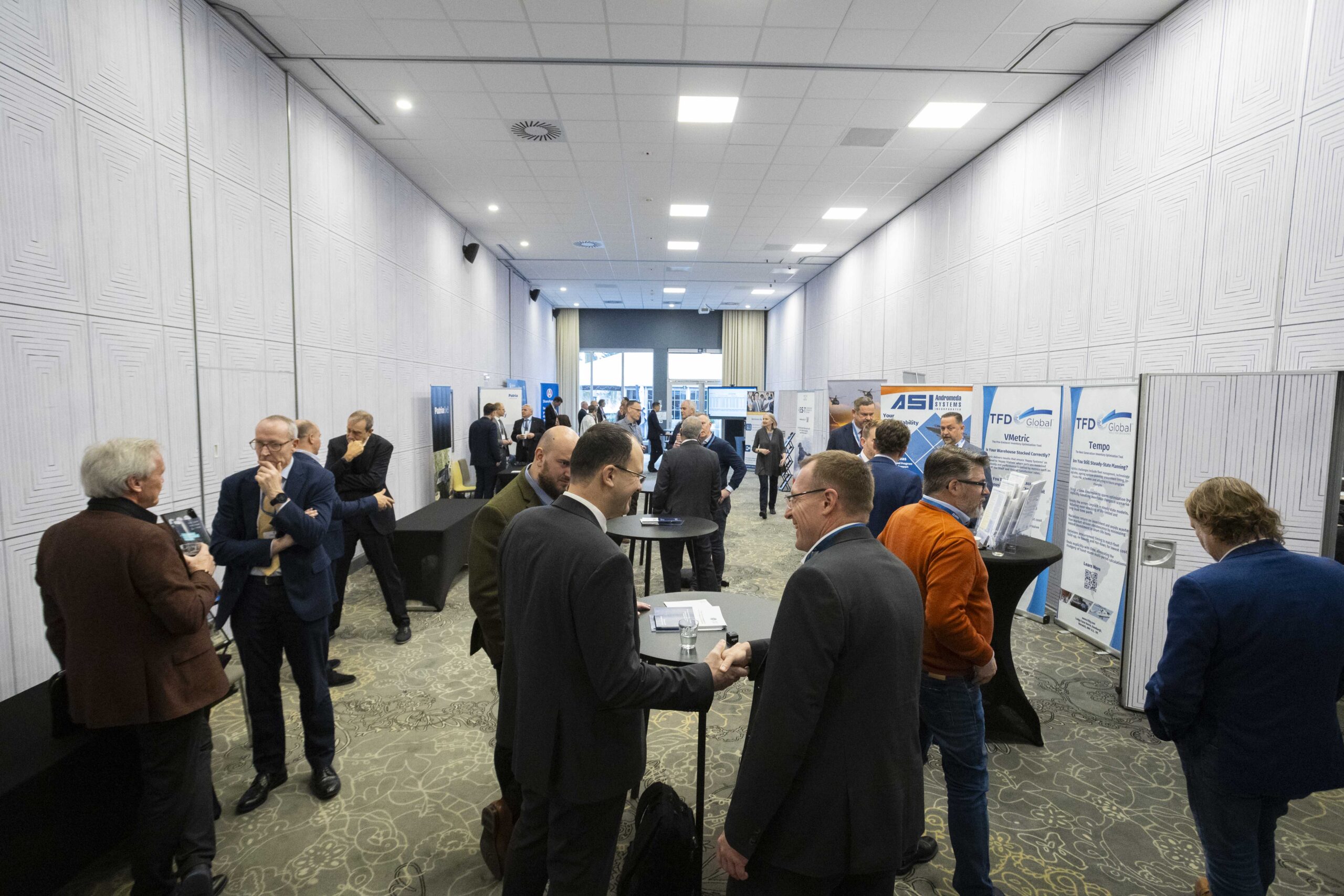Mittler Report Verlag, in cooperation with the NATO Life Cycle Management Group (LCMG), hosted the 20th edition of the LCM in NATO conference and exhibition on 21 and 22 January 2025 in Brussels. Bringing together government and industry representatives, and marking 20 years of NATO LCM, the conference offered a unique setting to exchange about the latest developments and challenges in this field.
A rapid technological pace enabled by digital transformation and the challenge of a changing environment is driving adaptation and transformation both in NATO and in industry. It is perhaps the most significant transformation in 20 years by its scale and depth, coming with its own opportunities and difficulties. The rich conference programme provided numerous occasions to take stock of where we are, but also to reflect upon challenges and their possible solutions. Honoured with the presence of Rear Admiral N.J. Wheeler (Director NDS) as guest speaker at the conference dinner, today’s needs and rationale for a data-driven organisation were placed in the wider context of Multi-Domain Operations and Digital Transformation.
Interoperability and standardisation remain the cement that make it possible for both Nations and NATO industries to jointly operate complex systems-of-systems, while constantly adapting to times and rapid technological change. Participants found out from the Chair of the AC/327 LCMG how this pivotal NATO committee continues to provide the means to optimise the defence and security capabilities of NATO, Member Nations and Interoperability Platform Nations in terms of performance, interoperability, sustainability and cost. Cooperation with industry as well as with other standards-developing organisations enhances coherence and provides the opportunity to embrace technological change at scale.

Compared to the past, today’s particularly dynamic context can also trigger evolution in requirements, but traceability needs to be maintained as to why they are evolving. It is important to understand how and when requirements need to be changed, and also when the requirement is enduring, but the solution should evolve new means of delivering results.
The case of fast digital transformation, and its potential impact on requirements management, was illustrated during the conference by an example from a NIAG Study focused on the ‘digital thread and the importance of configuration management (CM) to data quality and traceability’. Still ongoing, one of the study objectives is to look into how CM policies, standards and processes may provide assurance of digital thread for NATO with respect to through-life management.
In a keynote speech, the representative of the NATO Support and Procurement Agency (NSPA) explained how this lead organisation for multinational acquisition, sustainment and support addresses the challenge of the changing environment. Through innovative sustainment enabled by the exploitation of emerging and sustainable technologies, the Agency can innovate and transform its procurement, sustainment and operational support activities. The project ‘Repository for Additively-manufactured Products In a Digital environment’ (RAPID-e) was an illustrative example of this. Its long-term objective is to provide a NATO-wide marketplace for additive manufacturing.
The conference also featured a diverse mix of industry and government representatives who informed about the latest innovative trends to support optimisation of key LCM processes, but also shared many lessons learnt from the implementation of complex programmes and contracts. Many key themes emerged from the presentations and the highly interactive sessions that followed them.
Experience and lessons learned from ongoing projects
Insta ILS shared their experience as a strategic partner of the Finnish Defence Forces to support security of supply and LCM, providing examples from the sustainment of the F/A-18 Hornet fleet acquired by Finland in 1992 and explaining the benefits of involving the local industry in this process since the beginning.
Featuring decades of experience in vehicle life cycle services, Patria ISP shared experiences about the organisation of multinational life cycle management within the Common Armoured Vehicle System (CAVS) programme started in 2019 as a multinational cooperation initiative between Finland, Latvia, and Sweden, with Germany formally joining the programme in early 2025. The Patria 6×6 was selected as the common vehicle platform for this programme.
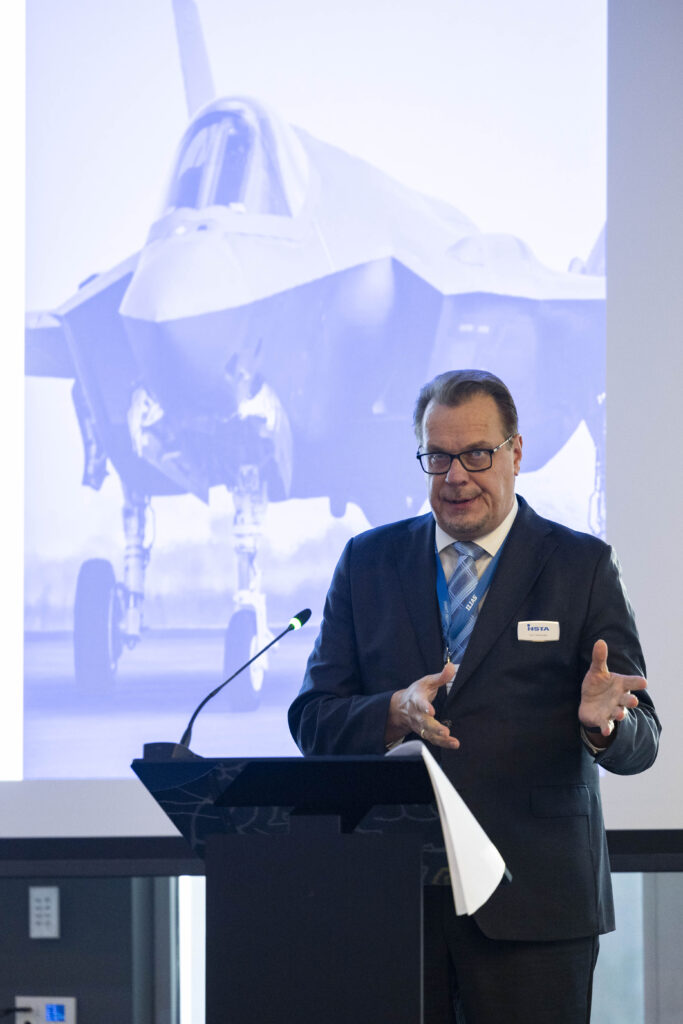
The presentations fostered important discussions on data availability, data sharing and data trustworthiness in the context of such multinational endeavours, where LCM of complex systems-of-systems is involved and where interoperability is of the essence for mission success. Not only does rapid change require nations to agree smoothly and without delays on the rules of joint programmes or initiatives, but contracting also needs adaptations to keep up with the necessity of providing services much more rapidly during wartime.
Enabling adaptation and transformation
Recognising many of the aforementioned challenges, several presentations addressed solutions to address them through available technology and through adaptation of contracting.
Deloitte showed how digital enablement can empower military organisations to navigate the complexities of modern deployments with greater agility, efficiency, and resilience. In particular, Digital Engineering facilitates the shift from paper-based records and document-centric approaches to digitally-hosted and model-based authoritative sources of truth for system data, technical specifications and configuration management. It provides a means to enabling the data flow through the asset’s life cycle, allowing optimisation of asset development for the operational sustainment of the asset through-life. However, commercial barriers, access to data, and capturing of data legacy remain challenges that can only be addressed by the people and the organisations involved.
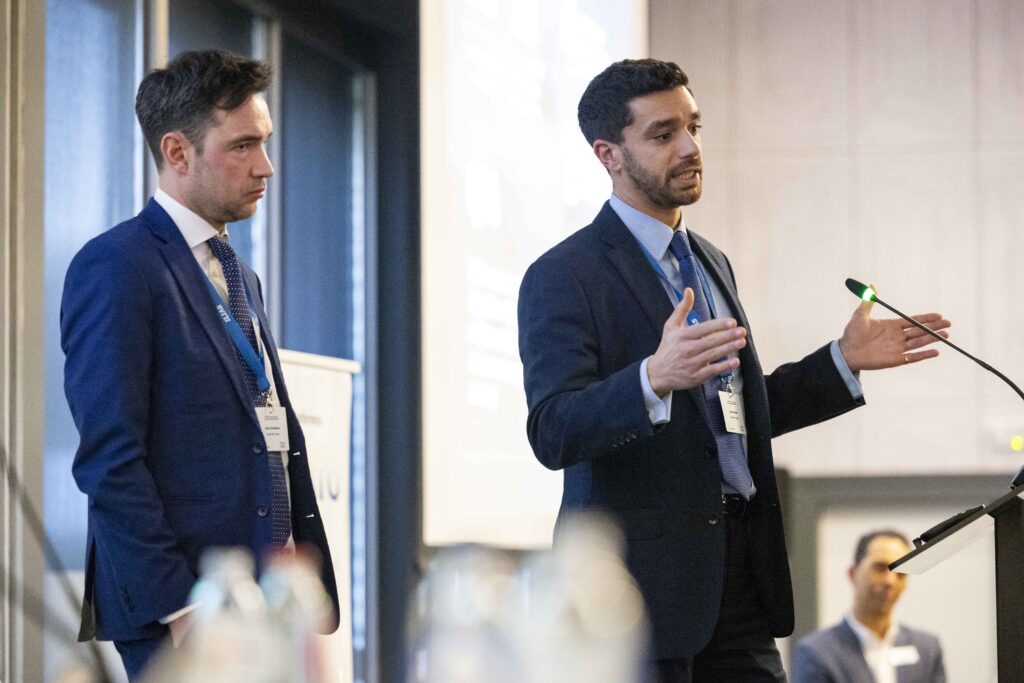
Progress in life-cycle cost estimation and optimisation
NCIA representatives shared insights from a comparative study analysing different models for cost analysis using available data from various types of US fixed-wing aircraft.
Systecon highlighted the importance of integrated modelling and analysis (M&A) capabilities as a key source of decision support throughout the life cycle. While presenting the Opus Suite and using scenario-based examples, they showed how M&A can be used to evaluate, influence and optimise aspects in mission, system, and product support engineering.
Sirius Analysis presented the pros and cons of various cost-estimating methodologies, stressing the advantages of adopting an end-to-end approach to cost estimating, which is an integrated process that covers all life cycle stages and that includes data integration, real-time updates, and comprehensive analysis. Cost estimation is a continuous process throughout the entire life cycle, that must be performed both during the procurement and the in-service phases of a system. The benefits of employing digital twins, machine learning (ML) and artificial intelligence (AI) were also thoroughly explained.
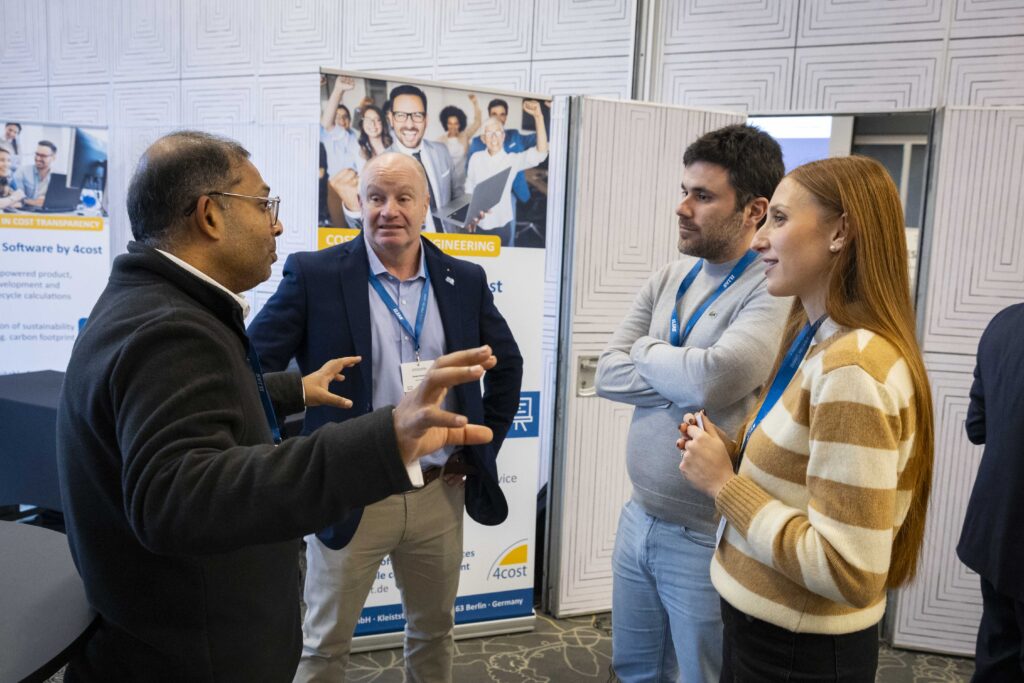
The topics revolving around cost estimation also opened the opportunity for meaningful discussions on the applicability of data in the context of traditional support regimes versus the context of new/emerging systems (for instance, drones) that may require different support arrangements. They also revealed that the process of integrating and using new standards is progressive and can be long, whereas discontinued standards can stay around for some time after termination.
Sustainability and the environment as emerging LCM considerations
Prompted by the impact of climate change, and encouraged by increasing availability of solutions to reduce carbon footprints, sustainability considerations are an emerging trend in life cycle management decisions. It may become an irreversible trend that will also impact the adaptation of contractual requirements. The 20th NATO LCM conference was an opportunity to find out how industry is responding to these trends by studying and developing tools and processes to support environmentally-responsible decisions while reducing costs, and without affecting system safety and reliability.
Gabe Batstone (Contextere) provided informative insights into the environmental cost of AI but also about the costs of not adopting AI. Based on findings from ongoing case studies, the presentation showed how the use of AI can also be optimised through the adoption of Small Language Models in certain contexts. A ‘blended sustainable AI pipeline’ approach was proposed that combined permanent online presence with intermittent and offline access to information solutions, depending on requirements.
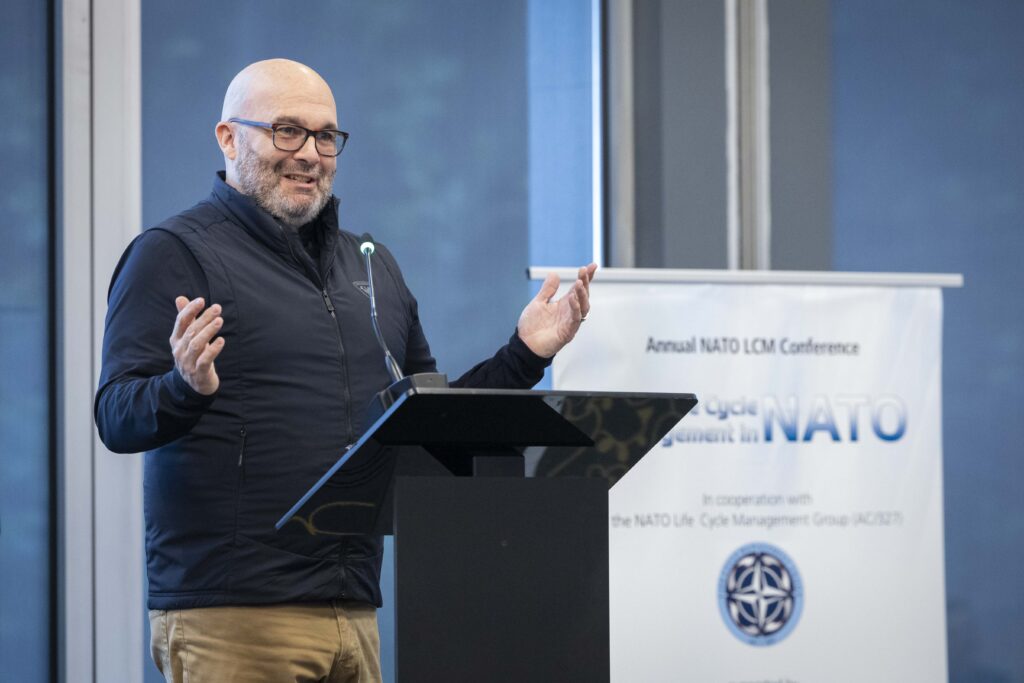
Delivering operational availability in a fast-paced environment
NATO and NIIG representatives concluded the two-day conference by reminding the challenges of the changing environment and acknowledging the valuable updates and case-study illustrations offered by NATO representatives and participating industries alike. While working on the implementation of digital transformation, it is important not to forget about the real world and the many lessons learnt from real-life cases.
Delivering operational availability remains an overarching and pivotal goal of NATO life cycle management, and each presentation contributed a piece to this complex endeavour. What is key is to integrate this goal from the very start of requirements definition, including from a contractual point of view. Operational availability is also facilitated by the standards and guidance produced by the AC/327 LCMG, which industry was encouraged to use.
Manuela Tudosia


